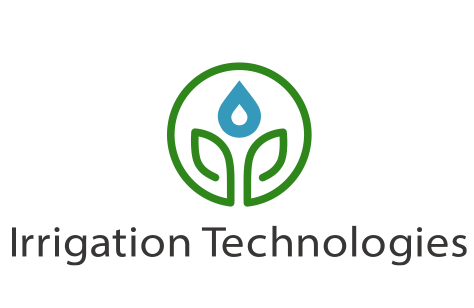How does DRI reduce costs for Fertigation and help the Environment?
Currently the go-to method of fertigation is applying it on the surface around the plant. The fertilizer is then watered-in and it eventually reaches the roots of the plant. Even in drip systems where liquid fertilizer passes through the drip watering system, the process still requires the nutrients to work its way from the surface to the root zone. But just like the water itself, this method is not the most efficient. In fact, fertigation starting at the surface is a slow and wasteful transfer of nutrients. This is because the soil acts as a filter, especially for phosphorus and potassium that help in the fruit development. These elements just take longer to get to the root zone. There is also significant loss of the fertilization product to areas around the plant that don’t need it, such as the “wasted water zone”, and areas between plants that don’t need it at all. But the biggest waste comes from ‘runoff’. Fertilization runoff is not just a financial waste and loss for the farmer, but it’s a major problem for our environment.
In fact, while fertilizers may be beneficial to the plant, they are not always as healthy for the rest of the environment. Fertilizer runoff and the use of excess fertilizer is a major source of pollution in soils and waterways globally. Excess fertilizer in soils and fertilizer that simply has not gotten below ground ends up in our waterways that can lower oxygen levels and decrease the habitability of these areas for the organisms that live there.
DRI units provide the exact amount of nutrients the plant needs without waste, and without being applied to the surface where it can run-off. This provides the farmer an economic advantage and the environment is better off for it.
Many organizations for years have been working on addressing the impact of fertilization on the environment and fertilizer companies have gotten on board to aggressively address this issue. Farmers and fertilization companies are turning to new and innovative ways of farming, and are calling this movement ‘Smart Farming’ and the core of this process is called ‘precision agriculture’. Today, with site-specific management tools like GPS and yield monitors, farmers can more accurately monitor all the factors affecting their crops. Specialized equipment can adjust fertilizer and water usage based on the needs of the soil and crop even in a specific portion of a field. Fertilizer and water usage are now being precisely dialed in. This type of technology is ensuring less waste than ever before and DRI is helping the efforts in these new ‘smart farming’ practices.
Besides saving water, the DRI unit with its controlled underground delivery, considerably reduces the amount of fertilizers entering our rivers and streams as a result of runoff like surface watering systems do. Thus, lessening the impact of toxins in our waterways. With this type of delivery, no fertilizer is wasted, and the farmer has complete control over the amount of fertilizer that is delivered to his plants. This becomes a win-win scenario for both the farmer and the environment, and it helps growers easily reach State and Federally mandated nitrate reductions.
Interesting fact: Liquid application of fertigation is based on a ratio per gallon delivered to the field watering system. If you are saving 60% on your water usage, then you are saving 60% on the amount of fertilizer used!…….. That’s DRI Technology!
Imagine the impact on on your bottom line!

